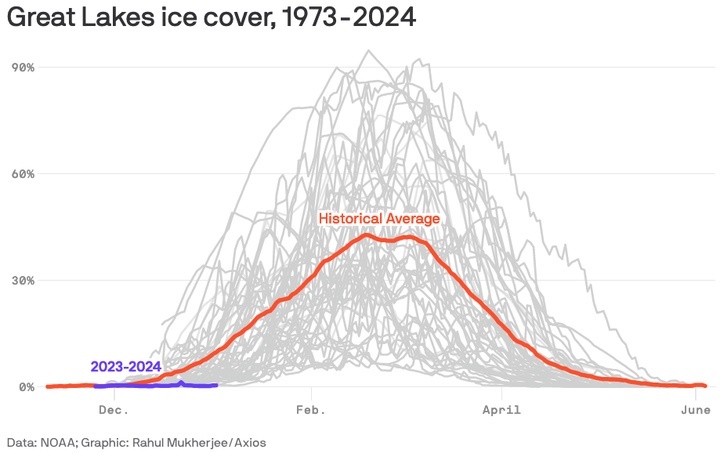Ski areas across the U.S. and Canada are in desperate need of natural snow for a ski season that typically would already be in full swing…
— from ‘Ski resorts struggle with winter running late…’ by Andrew Freedman on Axios.com, January 4, 2024.
Back in August 1988, George H. W. Bush received his party’s nomination for president of the United States. In his acceptance speech, he called for a “kinder, gentler nation.”
I assumed, at the time, that he was referring to people, and how people treat one another.
But he might have been thinking of the weather.
Across the U.S. and Canada — as of the beginning of January — milder and drier than average conditions had prevailed, preventing ski resorts from building up a nice wintry base for would-be skiers.
But as songwriter Paul Simon once reminded us, “One man’s ceiling is another man’s floor.” (Or, as he reminded us more than once, if you bought the album.)
Another person, who was not a songwriter, once wrote, “What’s good for the goose is good for the gander.” Apparently, however, that person was stealing ideas from a Frenchman, who wrote: “Sauce bonne pour l’oie, est bonne pour le jars,” implying that the goose (or gander) was now cooked and in need of a suitable sauce. The sauce being equally suitable for either gender.
I’m no Frenchman, but I’ve long held the opinion that a sauce for the goose might very well be unsuitable for the gander. In fact, the sauce for the goose probably costs a great deal more, if I know anything about gender differences and how money gets spent.
But to get us back on track, we were discussing ceilings and floors, and whether a heavy snowfall is equally good for the gander as for the goose. Because that is not the case.
In the case of winter weather, what is good for the ski resorts in the Western United States is not good for a middle-aged guy with a lengthy driveway. Or his son.
The Axios article quoted above included this informative graphic:

This graphic is not, in a direct way, related to the amount of snow we didn’t get in Pagosa Springs in December. But it does illustrate pretty clearly that winter temperatures in the northern Midwest have fluctuated rather dramatically since 1973, and that the winter of 2023-2024 has been skimpy, in terms of Great Lakes ice cover, if your preferred measuring stick is something called “Historical Average”.
A much better measuring stick, in my opinion, would be the number of hours a middle-aged man in Pagosa Springs spends shoveling his too-long driveway. In which case, the little purple line in the graph above would be close to ideal.
Just to be clear, I have nothing against skiing. Skiing is a fine sport.
Of course, I am referring to water skiing, for which you don’t need a lift ticket. Just a friend with a speedboat.
Nor am I totally opposed to skiing on snow. If we were able to make sure that our ski resorts had plenty of snow, say, once every six years?
Journalists who write things like:
The current early-season snow drought is likely to prove transient, since it would only take a wobble of the polar vortex and related jet stream shifts — or a series of storms — to deposit a more significant snowpack across North America…
…are not making an argument for a “kinder, gentler” climate. Quite the opposite.
Fortunately, those very same journalists will write things like:
This season offers a preview of future winters, as the season warms faster than any other, partly in response to human-caused climate change…
Something to look forward to.
Underrated writer Louis Cannon grew up in the vast American West, although his ex-wife, given the slightest opportunity, will deny that he ever grew up at all. You can read more stories on his Substack account.
